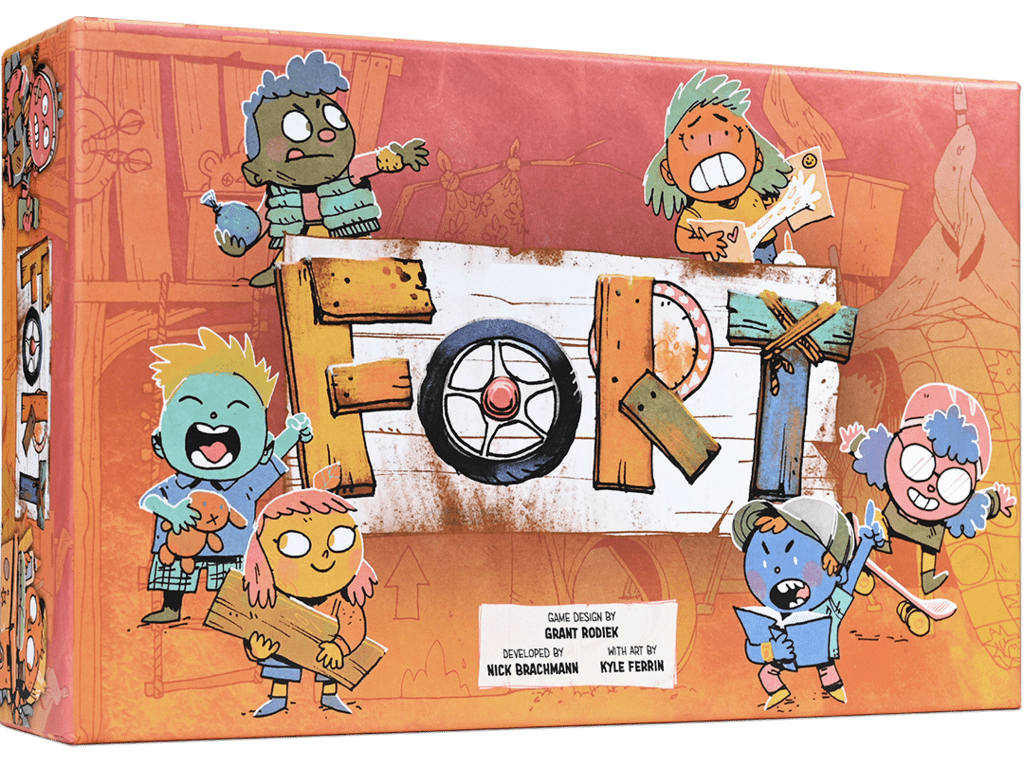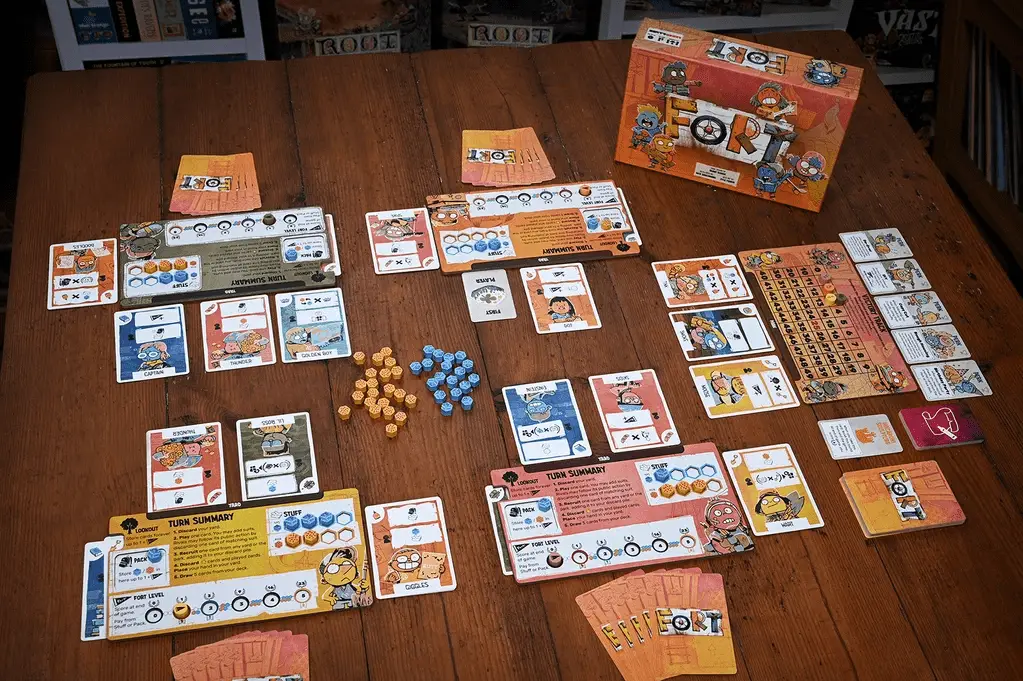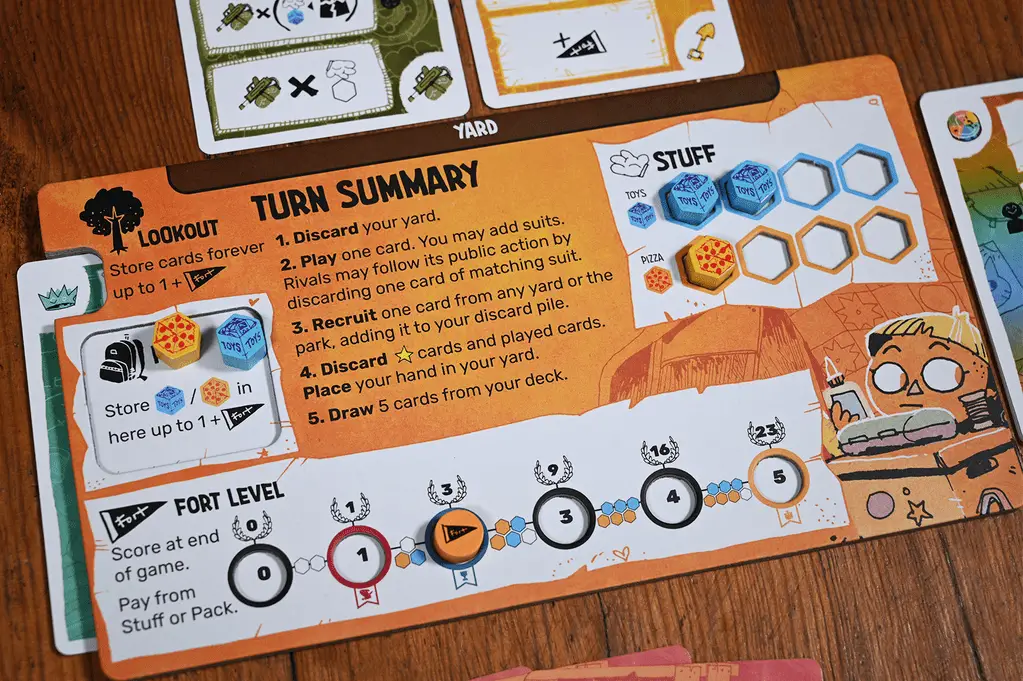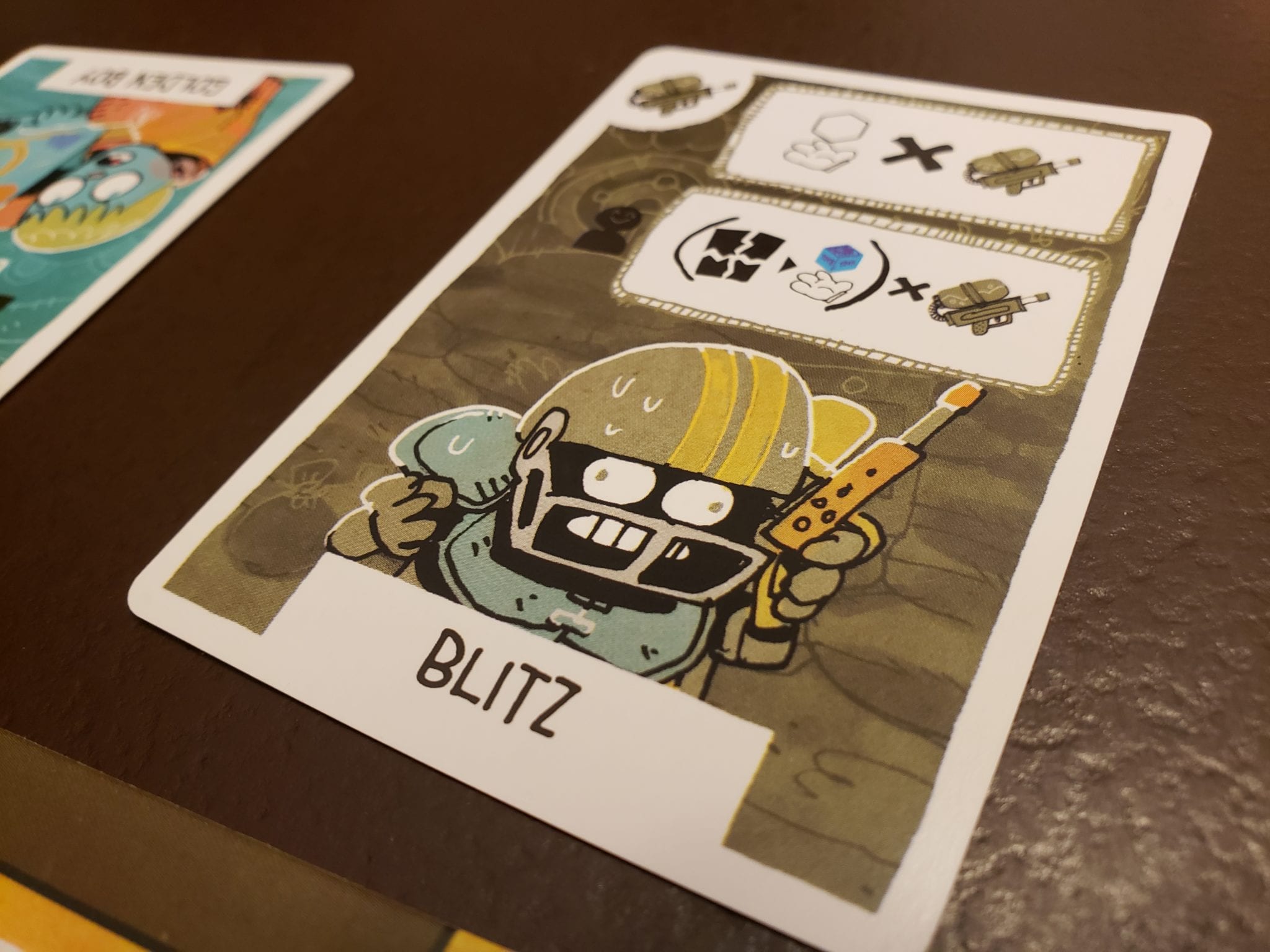Think back to the golden times of your childhood. When you could run around with your friends without a care in the world? Maybe you’d play video games after school or have a snowball fight on the weekend. Maybe you’d bike three miles to the creek to look at a cool frog someone found? In times like these, it’s hard to not be a little nostalgic for a time when pizza was the best food ever, toys could be currency, and forts, whether they be made of blankets or wood, were the quickest gateway to adventure. That hit of nostalgia, whether it be for your own childhood or for one you only imagined, is at the core of Leder Games’s newest deck-builder Fort, which I was lucky enough to get an advanced copy of to review.

Designed by Grant Rodiek (Cry Havok, Imperius), Fort started out as the Roman-themed SPQF before it was picked up by Leder for full publication. With the help of the team there, as well as the addition of art by their extremely talented in-house artist Kyle Ferrin, Fort finally came to be. But what’s this game of childlike wonder and fun actually like?
What’s In The Box?
One of the beauties of this game is that it’s compact. A lot of deck-builders, maybe most of them, tend to be these big unwieldy boxes packed with a billion cards or, more likely, filled with spots for expansions. Fort, on the other hand, is about the size of a normal party game. The cover art is as good as ever, showing off many of the kid characters in the game running around being…well, kids. It also shows off the sort of ramshackle DIY look that follows throughout the game, with even the logo looking like it was cobbled together from junk. The art and design is incredibly charming, best exemplified by the game-ending player receiving a Macaroni Sculpture for having the biggest fort.

As a deck-builder, Fort’s main component is the cards, and they are great. Extremely colorful front and back, each of them depicting a different kid with a unique personality. You really get a feel for who each kid thanks to how expressive Kyle Ferrin’s art is (in fact, it’s kind of fun to try to find your “Fort-sona” while playing the game). The cards don’t many words beyond the kid’s names, instead using doodle-y symbols to convey their effects. It really cleans the cards up and makes play a lot easier, esp since its important to know what your competitors are up to in each round.
The rest of the components are awesome, as is to be expected. The player boards are heavy-duty cardboard with places cut out for resources as well as easy placement of cards. The resources themselves (pizza and toys) are on wooden blocks, which is of course the best material, and slot onto the board easily. It’s extremely elegant and allows for a very organized table space, something that can sometimes be an issue with deck-builders.
How’s It Play?

The main conceit of the game is that you’re a kid trying to make friends and build the best fort in the neighborhood. To do this, you’ll have to acquire kids and use their abilities in the right combination. If you’ve played a deck-builder before, much of Fort will be the same. You play cards from your hand, acquire new ones, and draw a new hand each turn. Each card is a kid you’re adding to your little posse, and they have abilities and actions that you can use to gain victory points or activate the abilities of other kids. What Fort adds to this formula are two unique changes intended to increase player interaction.
The first are the “public actions.” Unlike most deck-builders, where each card has a benefit that’s exclusive to the one who plays it, Fort’s cards all have two actions: public and private. Private actions operate normally, but public actions are available to the whole table. What this means is that other player can copy your turn in exchange for resources, and some cards actually are built to benefit from this. It adds a new level of strategy for both sides, as players have to decide if an action is worth copying or being copies by others. It’s something truly unique and one of the most interesting parts of the game.
The other big change is the ability to recruit your opponent’s unused cards. Rather than discarding unused cards each turn, and you’ll almost always have some, a player will lay them out in front of them on their “Yard.” Their opponents then can, during their recruitment phase, choose to steal one of those kids instead of recruiting from the shared card pool at the “Park.” This adds a lot of choices and player interaction to the recruitment phase, something that’s pretty mundane in other deck-builders.

Gameplay is fast and incredibly fun, and the increased player interaction makes it feel a lot more lively than other games. It’s also harder for someone to snowball hard in the game thanks to the copying and stealing, and new players can close gaps with experienced players who might seem to have an early game edge. The game has a lot, a lot, of ways to get points and naturally it takes a bit to learn all of the different combinations possible. You don’t ever feel locked into your choice, however, and you can adapt or even outright change your strategy during the game without ruining your chance at victory. You don’t even have as much stress about reaching one goal, as the game doesn’t end when someone wins. Instead, there’s a sort of “Golden Snitch” ending where whoever builds their fort biggest first gets a chunk of points and ends the game. While the ability to get even that far quickly means you probably are in good shape points-wise, it doesn’t mean you’re guaranteed a win regardless.
Verdict

I love deck-builders, and I think this one is going to go down as an absolute classic in the genre. The art and accessible rules mean that new players won’t be discouraged by the game, and the game has multiple mechanics to help level the playing field a bit for everyone. The increased player interaction helps it feel like something truly unique, and it makes for a great game to bring down for more casual game nights with people who aren’t as into the complex cascading combinations of many popular deck-builders. Which is not to say Fort has no depth, as even after a few plays I still haven’t seen every possible interaction. I’d hesitate to call it a gateway game, as it’s individuality isn’t quite in being streamlined or fast, but it’s something that both casual and hardcore board game fans should absolutely take a look at.
[rwp_box id=”0″]
You can pre-order Fort from the Leder Games store, where it’ll run you about $30, or wait for the full retail release on September 21 to pick it up from your FLGS.
Review Copy and Images provided by Leder Games.

